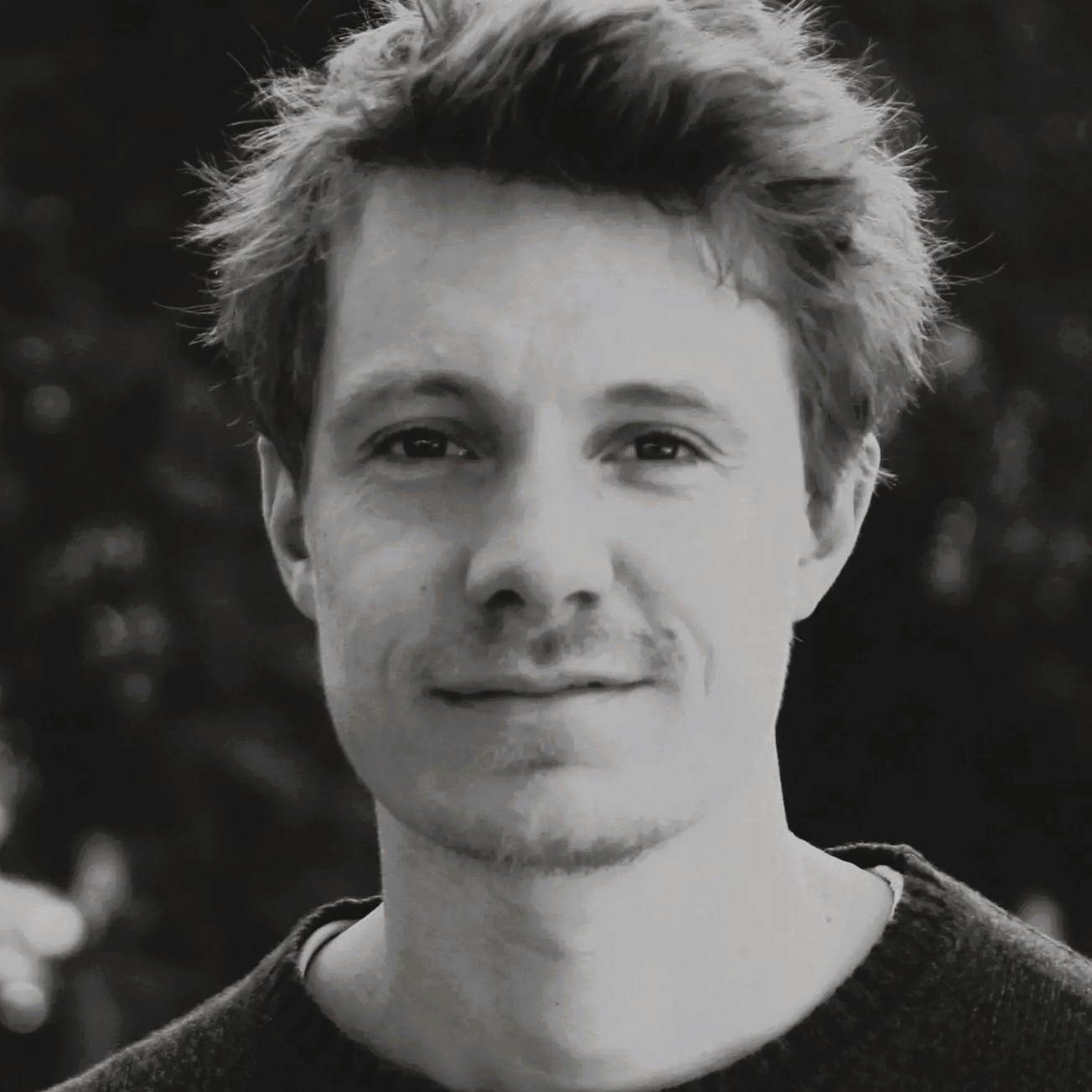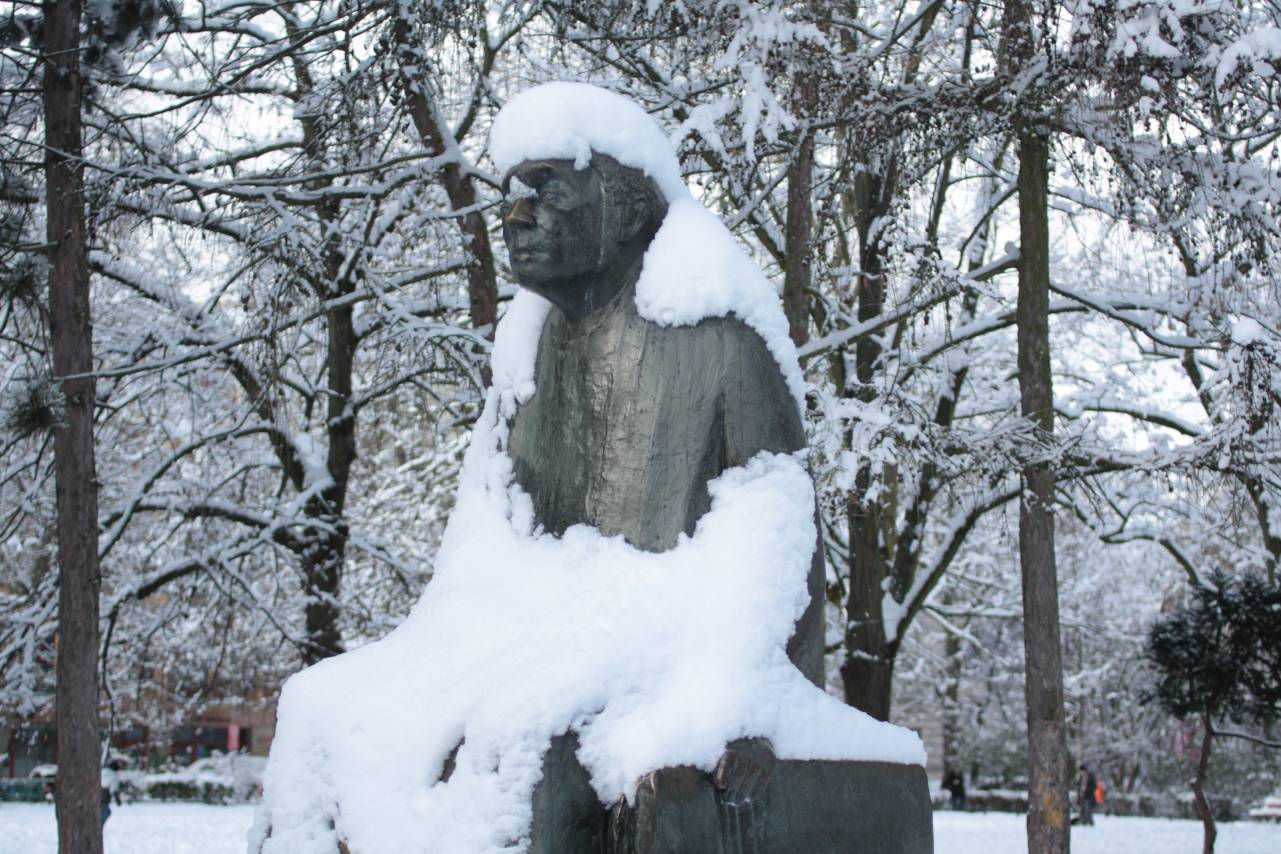Osteopathy in Berlin Prenzlauer Berg
Osteopathy Berlin practice for adults, babies, kids and athletes
Full time degree in osteopathy
German Heilpraktiker
Recognised by all major health insurances
The osteopaths of our Berlin practice - Book a consultation

Emma Eisenträger
Osteopathy for adults, babies and kids
I work to understand the underlying causes of your complaints and address them with targeted treatment methods. My goal is to restore and improve your mobility in everyday life, at work, or during sports. More on my website.
Focus areas: Pain in the musculoskeletal system, headaches, blockages, infants with cranial asymmetries, and more.

Fabio Piaser
Osteopathy for adults, athletes and kids
I look for the root cause of the complaints, tailor the treatment individually based on my findings, and provide advice to achieve long-term results. I combine osteopathic therapy with insights from sports science. More on my website.
Focus areas: Musculoskeletal pain, headaches, blockages, jaw disorders, and more.
Osteopathic treatment in Berlin, in the heart of Prenzlauer Berg
We offer high-quality osteopathy for the whole family.
An osteopathic treatment begins with a comprehensive case history and examination to understand each patient’s individual characteristics and the possible causes of the issue. The information gathered is used to guide the treatment and provide lifestyle recommendations, such as specific exercises.

Test, treat, re-test – We identify the cause of your complaints, plan a treatment tailored to you, and recommend measures to relieve your symptoms.
Praxis am Kollwitzplatz
Frequently Asked Questions about Osteopathy in Berlin – FAQ
What is osteopathy?
Osteopathy is an alternative form of medicine that aims to view the patient holistically. Findings are gathered through observation, such as gait analysis and posture, as well as through touch, such as assessing the mobility of a vertebral segment or muscle tone. These findings, combined with information from the patient’s medical history, such as their occupation or habits, lead to an osteopathic diagnosis. The subsequent treatment is based on this osteopathic diagnosis and includes both manual osteopathic techniques as well as recommendations for lifestyle changes, such as exercises and tips.
Do all osteopaths work the same way?
Die verschiedenen Osteopathieschulen unterscheiden sich teilweise in den Themen und Ansätzen, die vermittelt werden. Unter Osteopathen werden hauptsächlich zwei Arbeitsstile unterschieden: der strukturelle Fokus und der craniosakrale Fokus.
Ein struktureller Fokus bezieht sich auf osteopathische Techniken, die intensiver sind und oft von den Patienten stärker wahrgenommen werden. Ein craniosakraler Fokus hingegen umfasst eher statische osteopathische Techniken, bei denen die Hände über einen längeren Zeitraum auf einem Körperteil verweilen und nur minimale Bewegungen stattfinden.
In dieser Praxis liegt der Fokus auf der strukturellen Arbeitsweise der Osteopathie.
Have all osteopaths completed a degree program?
In Germany, osteopaths should complete a solid education in order to practice osteopathy. This training can take place either full-time or part-time. Additionally, there are universities in Germany that offer degree programs in osteopathy.
The osteopaths in this practice hold degrees from full-time programs at the Osteopathy School Germany and Dresden International University.
Are all osteopaths state-certified alternative practitioners (Heilpraktiker)?
In Germany, only doctors or alternative practitioners (Heilpraktiker) are allowed to make medical diagnoses, as the ability to diagnose is necessary both to plan treatment and to rule out other diagnoses. Furthermore, osteopathy in Germany – unlike in countries such as England, Italy, Portugal, and others where it is state-recognized – is officially recognized only in Hessen. For this reason, osteopaths in Germany must either be alternative practitioners (Heilpraktiker) or doctors.
Which symptoms can osteopathic treatment help with?
Osteopathy is applied to treat the following complaints. However, osteopathic treatment does not replace medical examination of the symptoms.
Orthopedic complaints:
Back pain (Lumbago Syndrome, Thoracic Spine Syndrome, blockages, stiffness, coccyx pain)
Neck pain (Cervical Spine Syndrome, blockages, tension, restricted mobility)
Numbness, tingling sensations, weakness in the arms, hands, shoulders (Shoulder-Arm Syndrome, Thoracic Outlet Syndrome, Carpal Tunnel Syndrome)
Joint pain (e.g. knee, hip, shoulder, elbow, hand pain)
Disc problems (Disc bulge, protrusion, herniated disc)
Sciatica
Postural issues or muscular tension
Neurological complaints:
Headaches or migraines
Dizziness
Tinnitus
Nerve pain (e.g. neuralgia)
Temporomandibular joint (TMJ) problems:
Jaw pain (e.g. Craniomandibular Dysfunction – CMD)
Teeth grinding (Bruxism)
Jaw clicking (Disc displacement in the temporomandibular joint – TMJ)
Ear pain
Digestive issues:
Irritable Bowel Syndrome
Heartburn
Abdominal pain or digestive disturbances
Constipation
Respiratory complaints:
Asthma (as adjunct therapy)
Chronic bronchitis (as adjunct therapy)
Restrictions in respiratory movement due to muscular tension
Urological complaints:
Pelvic floor tension, pelvic floor hypertonia
Incontinence
Women’s health complaints:
Menstrual pain
Pain during pregnancy
Postpartum recovery support
Pediatric osteopathy:
Colic in babies
Cranial asymmetries or plagiocephaly
Limited mobility
Sleep problems
Developmental disorders
Constipation
Other complaints:
Stress-related tension
Medically clarified chest pain or palpitations (functional heart complaints)
Exhaustion or fatigue
Aftereffects of injuries or accidents (e.g. whiplash)
Which symptoms can be treated with osteopathy?
Die Osteopathie wird angewendet, um die folgenden Beschwerden zu behandeln. Eine osteopathische Behandlung ersetzt jedoch nicht die ärztliche Abklärung der Beschwerden.
Orthopädische Beschwerden
- Rückenschmerzen (LWS Syndrom, BWS Syndrom, Blockaden, Steifigkeit, Steißbeinschmerzen)
- Nackenschmerzen (HWS Syndrom, Blockaden, Anspannungen, Einschränkung der Beweglichkeit)
- Taubheiten, Misempfindungen, Kraftverminderung in den Armen, Händen, Schultern (Schulter-Arm-Syndrom, TOS Thorachic-Outlet-Syndrom, Karpal Tunnel Syndrom)
- Gelenkschmerzen (z. B. Knie, Hüfte, Schulter, Ellenbogen, Handschmerzen)
- Bandscheibenprobleme (Disc Bulge, Protusion, Bandscheibevorfall)
- Ischias-Beschwerden
- Fehlhaltungen oder muskuläre Verspannungen
Neurologische Beschwerden
- Kopfschmerzen oder Migräne
- Schwindel
- Tinnitus
- Nervenschmerzen (z. B. Neuralgien)
Kiefergelenksprobleme
- Kieferschmerzen (z. B. Craniomandibuläre Dysfunktion – CMD)
- Zähneknirschen (Bruxism)
- Kieferknacken (Diskusverlagerung im Temporomandibulargelenk – TMG)
- Ohrenschmerzen
Verdauungsprobleme
- Reizdarmsyndrom
- Sodbrennen
- Bauchschmerzen oder Verdauungsstörungen
- Verstopfung
Atemwegsbeschwerden
- Asthma (als begleitende Therapie)
- Chronische Bronchitis (als begleitende Therapie)
- Einschränkungen der Atembewegung durch muskuläre Verspannungen
Urologische Beschwerde
- Beckenbodenverspannungen, Hypertonus des Beckenbodens
- Inkontinenz
Frauenbeschwerden
- Menstruationsbeschwerden
- Schmerzen während der Schwangerschaft
- Unterstützung bei der Rückbildung nach der Geburt
Kinderosteopathie
- Koliken bei Babys
- Schädelasymmetrien oder Plagiocephalus
- Einschränkung der Beweglicheit
- Schlafprobleme
- Entwicklungsstörungen
- Verstopfung
Sonstige Beschwerden
- Stressbedingte Verspannungen
- Ärztlich abgeklärte Brustschmerzen oder Herzstolpern (Funktionelle Herzbescchwerden)
- Erschöpfung oder Müdigkeit
Folgen von Verletzungen oder Unfällen (z. B. Schleudertrauma)
Sportsbeschwerden
- Schmerzen bei Sport-spezifische Bewegungen
- Anpassung vom Trainingsplan
What is the difference between chiropractors and osteopaths?
Chiropractors and osteopaths differ in their approach, methods, and focus of treatment. Chiropractors focus on the spine and musculoskeletal system, correcting misalignments (subluxations) through quick, targeted manipulations (“adjustments”) to alleviate complaints such as back pain or headaches. Osteopaths can also manipulate joints if necessary, but they take a more holistic approach. In addition to treating muscles and joints, they also address internal organs, fascia, and the nervous system, using gentle techniques like stretching and mobilization to promote the body’s self-healing abilities.
Does german health insurance (Krankenkasse) cover the costs of osteopathy in Berlin?
In Germany, most statutory health insurance companies cover at least part of the costs for osteopathic treatments. For example, the AOK (region-dependent, up to €500 per year), Barmer (bonus program), IKK classic (4 treatments, up to €160), Techniker Krankenkasse (TK) (3 treatments, up to €120), and DAK Gesundheit (3 treatments, up to €120) offer reimbursements. Often, a private prescription from a doctor is required to apply for reimbursement.
What is the difference between physiotherapy and osteopathy?
Physiotherapists do not make diagnoses but carry out the therapy prescribed by a doctor. They use manual techniques and guide patients in specific exercises. Physiotherapy can be very effective for pain management and rehabilitation after accidents, injuries, or surgeries.
Osteopaths, on the other hand, are allowed to make diagnoses as alternative practitioners and thus have more freedom to examine the entire body and treat various areas. Some osteopaths are also trained to recommend targeted exercises. Many manual techniques are used in both osteopathy and physiotherapy. However, only osteopaths are permitted to manipulate the spine (commonly referred to as “cracking”).
How many osteopathic treatments are recommended?
The number of necessary treatments largely depends on the diagnosis and the individual needs of the patient. An osteopath should create a prognosis and a treatment plan for the patient after the first session.
Do doctors recommend osteopathy in Berlin?
Many doctors work closely with osteopaths or recommend osteopathy. They often provide a prescription for osteopathic treatments, which is recognized by most german health insurance companies (Krankenkassen).
Is manipulation (cracking) involved in osteopathic treatment?
Our patients can rest assured: A manipulation (the “cracking”) of the spine will not be performed if it is not desired.
Manipulations are a tool in an osteopath’s repertoire and can be very effective in certain cases to relieve blockages and alleviate pain. However, many people are afraid of this technique or have had negative experiences with it.
The good news is that osteopaths have numerous alternative techniques to gently and effectively treat and mobilize vertebrae and joints. It is important, however, that patients address their concerns during the anamnesis or treatment so that these can be individually considered.
Contact
Do you need an appointment or do you have a questions about osteopathy?
- Phone
- Address
Husemannstr. 4, 10435 Berlin